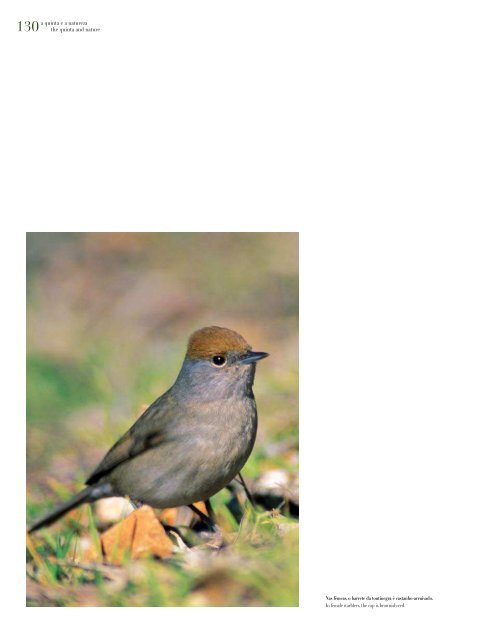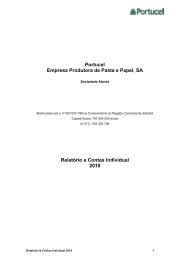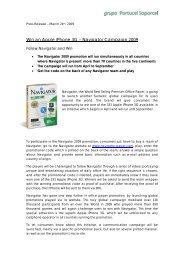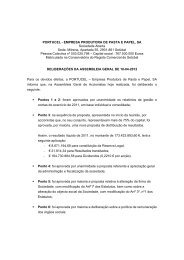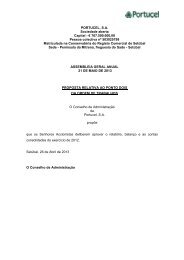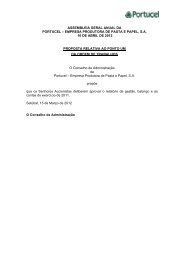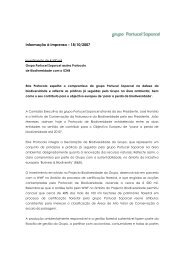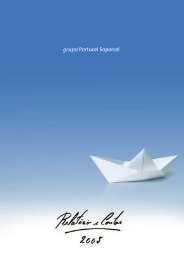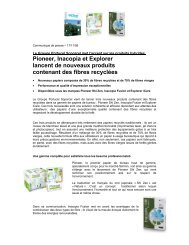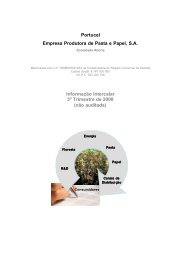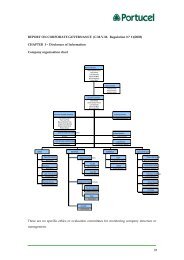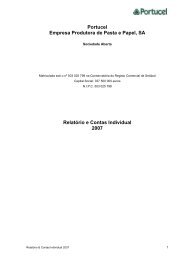Os Eucaliptos e as Aves da Quinta de São Francisco
Os Eucaliptos e as Aves da Quinta de São Francisco
Os Eucaliptos e as Aves da Quinta de São Francisco
You also want an ePaper? Increase the reach of your titles
YUMPU automatically turns print PDFs into web optimized ePapers that Google loves.
a quinta e a natureza<br />
a quinta e a natureza<br />
130 the quinta and nature the quinta and nature 131<br />
N<strong>as</strong> fême<strong>as</strong>, o barrete <strong>da</strong> toutinegra é c<strong>as</strong>tanho-arruivado.<br />
In female warblers, the cap is brownish-red.<br />
Beleza rara. A poupa é d<strong>as</strong> espécies menos frequentes na <strong>Quinta</strong>.<br />
A rare beauty. The hoopoe is one of the less frequent visitors to the <strong>Quinta</strong>.<br />
(Streptopelia turtur) e <strong>da</strong> rola-turca<br />
(Streptopelia <strong>de</strong>caocto). É frequente ouvir est<strong>as</strong><br />
espécies ao longo <strong>de</strong> todo o ano m<strong>as</strong>, <strong>de</strong>vido<br />
à sua preferência pelos troncos mais altos d<strong>as</strong><br />
árvores, nem sempre são fáceis <strong>de</strong> observar.<br />
O pombo-torcaz é o maior columbiforme<br />
português, sendo comum no Norte e Centro<br />
do País e na planície alentejana. Entroncado<br />
e <strong>de</strong> plumagem cinzenta, distingue-se pela<br />
mancha branca do pescoço. É uma ave gregária,<br />
m<strong>as</strong> no período reprodutivo procura zon<strong>as</strong> mais<br />
sossegad<strong>as</strong> para fazer o ninho. É nele que a<br />
fêmea põe dois ovos brancos que vai incubar<br />
ao longo <strong>de</strong> 18 di<strong>as</strong>. Um mês <strong>de</strong>pois, os jovens<br />
abandonam o ninho. Da sua dieta constam<br />
grãos, que recolhe em zon<strong>as</strong> abert<strong>as</strong> como os<br />
campos <strong>de</strong> cultivo, a que junta algum<strong>as</strong> bolot<strong>as</strong><br />
no Inverno. Na estação fria a população<br />
aumenta com a chega<strong>da</strong> <strong>de</strong> bandos vindos do<br />
Norte <strong>da</strong> Europa, on<strong>de</strong> o alimento já esc<strong>as</strong>seia.<br />
Des<strong>de</strong> que, no início dos anos 60, chegou<br />
à Península Ibérica vin<strong>da</strong> do Su<strong>de</strong>ste europeu,<br />
a população <strong>da</strong> rola-turca tem aumentado em<br />
todo o País, sendo hoje uma espécie resi<strong>de</strong>nte.<br />
É facilmente i<strong>de</strong>ntificável por ser mais clara<br />
que a rola-brava e pelo típico colar escuro.<br />
A rola-brava é menos comum. Trata-se <strong>de</strong> uma<br />
espécie migradora que chega a Portugal em<br />
meados <strong>de</strong> Abril. O ninho é qu<strong>as</strong>e sempre<br />
construído por entre a vegetação <strong>de</strong>nsa.<br />
A incubação dos dois ovos <strong>de</strong>mora cerca <strong>de</strong> du<strong>as</strong><br />
seman<strong>as</strong> e p<strong>as</strong>sados 20 di<strong>as</strong> <strong>as</strong> cri<strong>as</strong> estão<br />
pront<strong>as</strong> para abandonar o ninho.<br />
white spot on the neck. It is a gregarious bird,<br />
which looks for quieter are<strong>as</strong> to build its nest<br />
during the breeding se<strong>as</strong>on. The female <strong>de</strong>posits<br />
two white eggs in this nest, which incubate<br />
for 18 <strong>da</strong>ys. A month later, the young leave<br />
the nest. Their diet inclu<strong>de</strong>s grains, which they<br />
collect from open cultivated fields, to which they<br />
add acorns in the winter time. During the cold<br />
se<strong>as</strong>on, the population grows with the arriving<br />
flocks from Northern Europe, where food<br />
becomes scarce.<br />
Since its arrival in the Iberian Peninsula in the<br />
beginning of the 60’s, from Southe<strong>as</strong>t Europe, the<br />
collared-dove population h<strong>as</strong> grown throughout<br />
the whole country, and is now a resi<strong>de</strong>nt species.<br />
It is e<strong>as</strong>y to i<strong>de</strong>ntify because its colour is lighter<br />
than that of the turtle dove and because of its<br />
typical <strong>da</strong>rk collar. The turtle dove is less<br />
common and is a migratory species that arrives<br />
in Portugal around the middle of April. The nest<br />
is almost always built amongst <strong>de</strong>nse vegetation.<br />
The two-egg incubation takes about two weeks<br />
and 20 <strong>da</strong>ys later, the young are ready to leave<br />
the nest.


